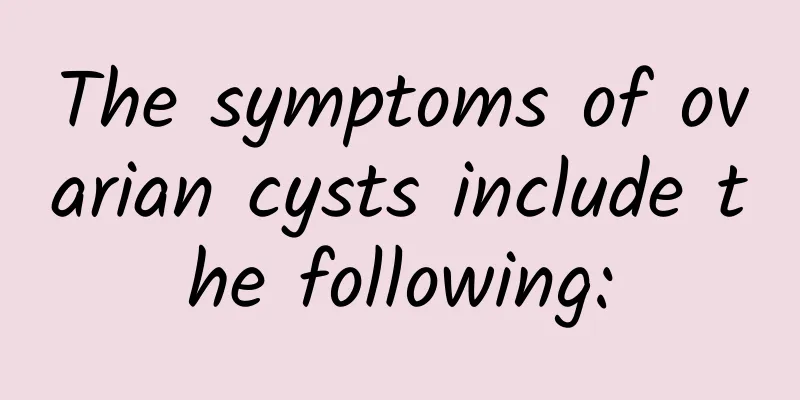Five symptoms of malignant uterine fibroids

|
Correctly understanding the symptoms of malignant uterine fibroids provides a basis for active diagnosis and treatment. So what are the symptoms of malignant uterine fibroids? With this question, we consulted relevant experts, and the experts gave the following suggestions for us to master in detail. Symptoms of malignant uterine fibroids: 1. Abdominal mass: Lower abdominal mass is often the main complaint of patients with uterine fibroids, up to 69.6%. Sometimes it may be the only symptom of fibroids. This often occurs in intramural fibroids that do not affect the endometrium, especially in the uterine fundus or under the pedunculated serosa. 2. Irregular vaginal bleeding: This is a common symptom of malignant uterine fibroids. Bleeding may occur at any time except for those who undergo hormone therapy. If a postmenopausal woman has vaginal bleeding similar to menstruation, it indicates the possibility of uterine cancer. 3. Weight loss, weakness, pain in the lower abdomen, back, and legs: These symptoms usually occur in the middle and late stages, when tumor cells usually metastasize or spread. 4. Compression symptoms: mainly occur in cervical fibroids, or fibroids in the lower part of the uterus enlarge, fill the pelvic cavity, and compress surrounding organs. Compression of the bladder, frequent urination or dysuria, urinary retention, etc.; compression of the ureter can cause hydronephrosis and pyelitis. Fibroids growing on the posterior wall of the uterus can compress the rectum, causing constipation and even difficulty in defecation. 5. Leucorrhea: Leucorrhea increased by 41.9%. Enlarged uterine cavity, increased endometrial glands, pelvic congestion or inflammation can increase leucorrhea; when submucosal fibroids ulcerate, become infected, bleed, or become necrotic, a large amount of bloody or purulent leucorrhea will be produced. The above symptoms of malignant uterine fibroids are more common, and we need to actively grasp them. Of course, in order to ensure everyone's health, after mastering the symptoms of malignant uterine fibroids, we must actively consult the advice of relevant experts. |
<<: What are the dangers of premature ovarian failure?
>>: The right ovarian cyst is 3.7, how to treat it?
Recommend
Can menopause be cured?
Every woman will experience menopause, so you sho...
Secondary causes of dysmenorrhea may occur in women with intrauterine devices
The causes of secondary dysmenorrhea often cause ...
Be careful of these reasons causing cervical erosion
What are the causes of cervical erosion? Cervical...
Onions have 6 major fat-burning properties! Quercetin Oligosaccharide is awesome
Eat pork trotters with onions, and eat steak with...
Burning 100 calories in 10 minutes is not a dream? Just do these 6 steps
The continuous parties have made you gain a lot o...
What are the ways to relieve dysmenorrhea? 4 ways to quickly relieve dysmenorrhea in 5 minutes
It is very common for girls to have dysmenorrhea,...
In the summer, I like to exercise in an air-conditioned room. To prevent "sadness", I need to warm up to this extent...
The high temperature since the beginning of summe...
What causes shorter menstrual cycles?
Shorter menstrual cycles are a problem that many ...
What are the dietary treatments for vulvar leukoplakia
As people's awareness of health care continue...
Talk about some of the best ovarian cyst treatments
Ovarian cysts bring more harm to our lives. As pa...
Why does menstrual disorder occur after abortion?
After artificial abortion, the ovaries can genera...
How should women take care of themselves if they have chronic cervicitis?
How should women take care of themselves when the...
What are the methods for detecting bacterial vaginosis?
Bacterial vaginosis is also known as nonspecific ...
What is the probability that the gestational sac will not be expelled after medical abortion? Knowing this early will benefit you sooner
Although medical abortion is simple and convenien...
What are the methods of traditional Chinese medicine for treating female Bartholinitis?
Traditional Chinese medicine is a relatively comm...









